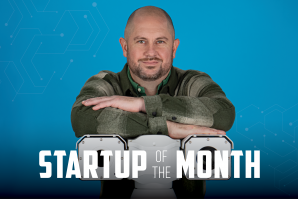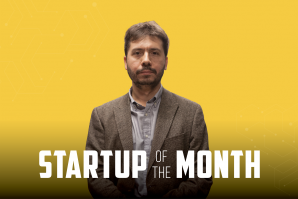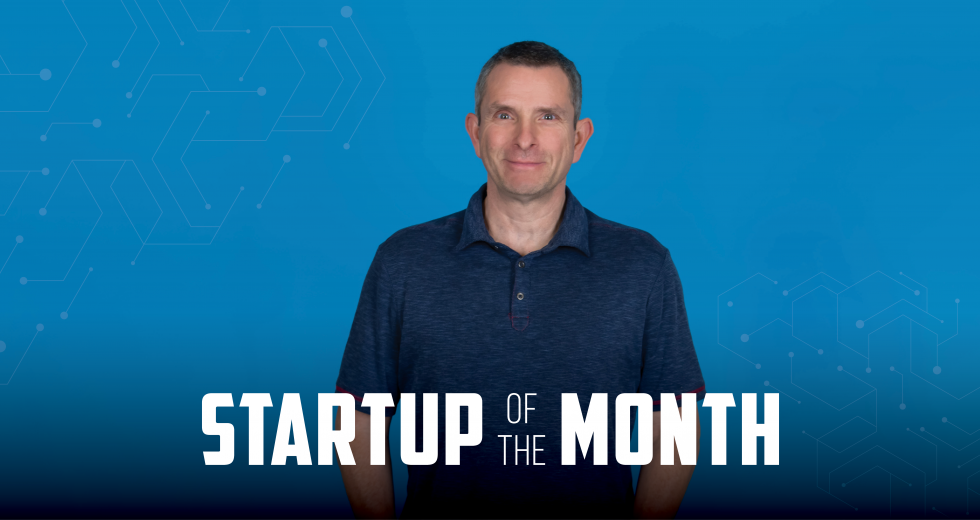In recent years, avian influenza (or “bird flu”) has been on a rampage, wiping out wild and domestic birds, disrupting the environment, and causing a shortage of eggs and poultry meat. The Davis-based startup AgriNerds aims to help farmers to identify potential risks and protect poultry against the threat of diseased ducks.
Co-founded by a group of UC Davis affiliated engineers and veterinarians, AgriNerds developed the WaterFowl Alert Network, or WFAN, which uses a combination of weather radar, satellite imagery and ground-based sensors to make detailed daily predictive maps of waterfowl.
“If you’re a commercial poultry producer, for example, over the last two to three years, we’ve lost over 70 million poultry with billions of dollars in damage,” says CEO Maurice Pitesky, an associate professor at the UC Davis School of Veterinary Medicine. “The effects to consumers in the U.S. and beyond are huge. Hence we need new solutions that help our farmers protect their poultry.”
Jeffrey Buler, a professor of wildlife ecology at the University of Delaware, is the primary developer of the network, touted as “the world’s first SaaS (software as a service) based predictive tool for waterfowl mapping and abundance.” The tool costs a monthly fee of $50 per farm. Out of 44,000 chicken farms in the U.S., about 1,000 farms have used the tool so far, Pitesky says.
“Ever since radar was discovered before World War II, people knew you could use it to identify the location of birds like waterfowl, ducks and geese,” he says. “It wasn’t until the last decade where people like myself and Jeffrey Buler started thinking about how to use the technology in more of an applied setting instead of an academic exercise.”
In November, AgriNerds won Sacramento State University’s entrepreneurship competition. But there are still many hurdles to overcome. Radar access varies across countries. Also, the screening of radar is tedious, although the team has developed “novel machine learning-based algorithms to help speed the process along,” Pitesky says.
Dr. Carrie Cremers, a poultry veterinarian, had been working with AgriNerds for a different project and they presented their waterfowl tracking network. Previously, Cremers could only track waterfowl activity through public websites that showed bird movement. But with AgriNerds’ software, she can now see where the birds are roosting and migrating.
“You give them the farm location, and they can tell you the activity close to your farms,” she says. “It’s really important because we know waterfowl and waterbirds are carrying the Highly Pathogenic Avian Influenza Virus, and knowing where they are in relation to your farm helps you be more aware.”
This is, admittedly, the first step. Now that farmers can track waterfowl, there are other questions that need to be addressed. How does waterfowl tracker data correlate to a farmer’s risk level? What next steps can be taken to prevent diseased waterfowl from infiltrating these farms based on this data?
That said, the program is still new. Right now, customized tracking models can be created by request on demand. But ultimately, Pitesky says, customers will be able to go onto the site, select the geographic area they want and choose what time in the past, present or future they wish to view.
“The technology and the application of it and belief in it is the easier part, but getting people to use it, especially in agriculture, is a hard thing to do,” he says. “Ultimately, investment will help with rapid expansion and customer acquisition in multiple fields.”
To that end, AgriNerds is collaborating with various sectors like recreation (such as waterfowl hunters) and environmental management (like protecting waterfowl habitats). Other potential partnerships include renewable energy (for example, assessing solar and wind power sites) and golf course management. The technology is designed to work globally, offering strong potential for international expansion.
–
Stay up to date on business in the Capital Region: Subscribe to the Comstock’s newsletter today.
Recommended For You

Startup of the Month: 3D Organic Polymer Silk
Trio of researchers aim to revolutionize orthopedic medicine with spider silk
With over 3 billion years of evolution under its belt, the natural world has a pretty long track record of creativity. Knowing this, three interdisciplinary researchers at UC Davis looked to the golden silk orb-weaver spider to develop an innovative biomaterial.

Startup of the Month: OnSight Technology
Company deploys robots to detect issues on solar farms
After years in the solar farm industry, Derek Chase was looking into different drone companies to handle aerial flyovers. But he found these companies couldn’t provide the information he needed, which was found on the ground, under the panels, where the wires are.

Startup of the Month: Botanical Solution Inc.
Lab-grown plants offer key compounds for crop protection, vaccines
Grown in a lab from raw materials, so-called “baby trees” could be essential for protecting not only the future of fruits and vegetables, but also people. This is the aim of Botanical Solution Inc., a Davis-based ag tech startup with global roots.

Startup of the Month: RePurpose Energy
Fairfield startup puts sustainable spin on retired EV batteries
For an old electric vehicle battery, retirement doesn’t mean the end of the road. This fact was the catalyst for RePurpose Energy, a Fairfield-based startup that converts retired EV batteries into renewable energy storage systems.

Startup of the Month: Scopi
A portable endoscope helps clinicians diagnose nasal problems
Nasal and sinus problems can be tricky and costly to diagnose. Based on a hardware prototype developed at Stanford University, Scopi Medical aims to solve both problems with the first AI-enabled portable nasal endoscope for diagnosis at the point of care.

Startup of the Month: Biosense
Innovative test strips measure glucose and other substances from saliva
Founded in 2020, Biosense is based on technology with development
led by Luis Bojorquez, founder and CSO. Bojorquez specializes in
combining tiny natural substances (e.g. proteins) with inorganic
materials to develop novel biosensing technologies.




